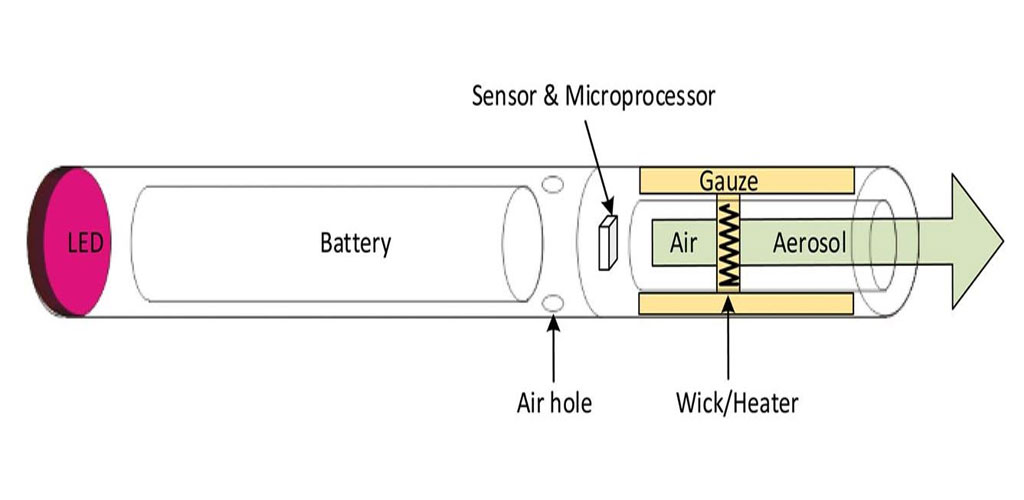The structural principle of electronic cigarette

Electronic cigarettes (CBD e-cigarettes) include subcategories of broader products, described as personal vaping devices (PV), advanced personal vaping devices (APV) or electronic nicotine delivery systems (ENDS). These products come in a range of designs. Adequate characterization of e-cigarette design features is necessary to assess potential risks and benefits associated with their use.
method
A systematic literature search was conducted in October 2013 to identify studies related to e-cigarettes and electronic nicotine delivery systems. Ten reference databases (Web of Knowledge, PubMed, SciFinder, Legacy Tobacco Documents Library, Embase, EBSCOhost, Espacenet, Google Scholar, Google Patent, and the US Patent Office) were searched using a set of related search terms used alone or in combination. Search terms include the following: “thermal runaway” or “battery fire” or “battery explosion” or “lithium battery explosion” or “electronic nicotine device” or “electronic nicotine delivery system” or “electronic cigarette” or “electronic cigarette” or ‘Electronics’ and ‘Cigarettes’.
To be considered for inclusion, the article or patent (granted and applied for) must (1) be written in English; (2) be published publicly; (3) deal in part or exclusively with engineering design or operation, or lithium battery fire or explosion. The search yielded a total of 296 vaping articles or documents that met the inclusion criteria. Article titles and abstracts (the titles provide insufficient details) were then screened for relevance. In addition, thousands of battery and patent documents were identified; about 100 documents and 460 patents related to battery operation were screened. Overall, the search yielded 54 articles and 28 full-text reviewed patents, which included a manual search of the reference lists of selected articles to identify other relevant publications.
Following full-text review, 14 articles and documents and 16 patent documents were deemed directly relevant to the analysis. These articles and patent documents were published between 2004 and 2013. The validity and strength of each study was determined based on a qualitative assessment of the depth and breadth of the analysis, the uniqueness and relevance of the engineering problem.
Other documents considered for review include conference reports/posters, reports not published in peer-reviewed journals, national and international standards, and government reports. Cite three documents from online sources or meeting minutes. Two websites that provide information on the design and operation of e-cigarettes are also cited. Although not peer-reviewed, these websites and documents provide valuable insights into product design and operation.
scientific review
Basic Design and Operation
Electronic cigarette designs are often similar in size to conventional cigarettes, and to some extent graphic designs. Common components of most e-cigarettes include the aerosol generator, flow sensor, battery and solution (or e-liquid) storage area (pictured below)
Typical e-cigarette configuration. This shows the wick/heater as an aerosol generator, gauze saturated with e-liquid, a microprocessor (optional) to control the operation and an LED (optional) to simulate burning coal.
Electronic cigarettes are currently classified as disposable or reusable. Disposable devices do not have rechargeable batteries and are generally not rechargeable. They may have light emitting diodes (LEDs). The e-liquid container or cartridge can be separate from the aerosol generator or atomizer; the combined atomizer and cartridge are called pod atomizers. Electronic cigarettes currently on the market typically have an aerosol generator with a metal or ceramic heating element wrapped around a core bundle.
E-cigarettes can use a variety of materials. They include metals, ceramics, plastics, rubbers, fibers and foams. Some of the materials can be aerosolized and may contribute to adverse health effects.
Although the complexity of electronic cigarettes varies, the following describes the basic operations of the first generation of electronic cigarettes:
- The user uses the electronic cigarette, and the electronic cigarette activates the airflow sensor.
- Air flow sensor detects pressure changes and prompts LED,Heat Sink Machining and heating element current.
- The e-liquid saturates the core by capillary action and is then atomized by the heating element.
- The atomized e-liquid droplets then flow into the user’s mouth and lungs.